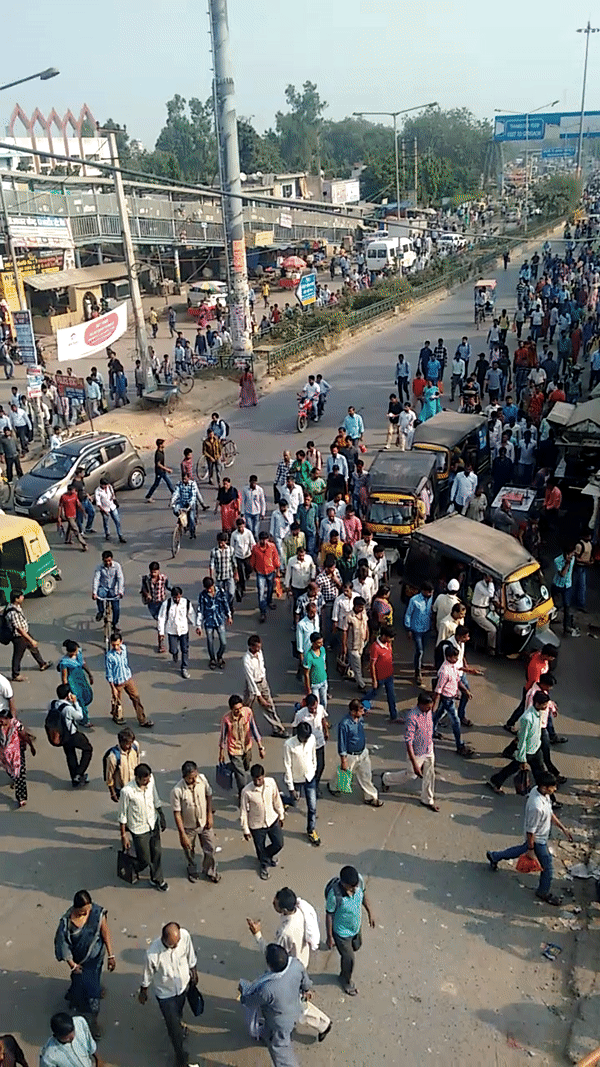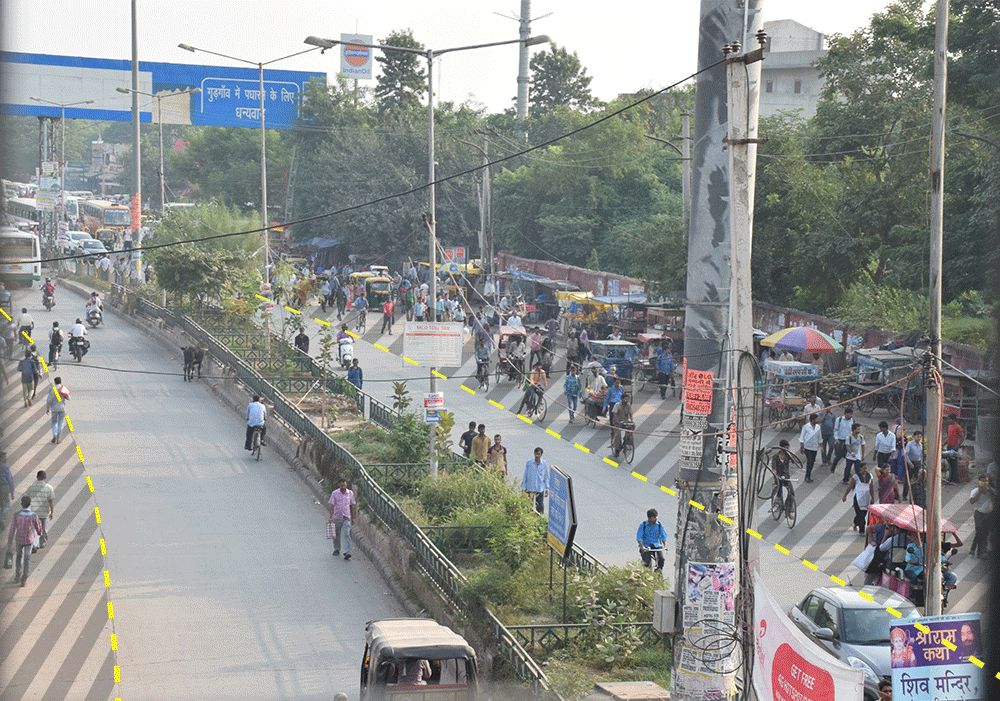
HOW CAN INDIAN STREETS FOSTER PEDESTRIAN-FRIENDLY ENVIRONMENTS?
Status
Ongoing
Timeline
November 2016
Collaborators
Nishant Chauhan
Ongoing
Timeline
November 2016
Collaborators
Nishant Chauhan
Serving as the NH8 before the Delhi-Jaipur expressway took over, the Old Delhi-Gurgaon road today overflows with factory workers on their way to Udyog Vihar. Absence of a dedicated pedestrian walkway forces them to walk on the road along cars, rickshaws and trucks - prone to frequent accidents.
We sought out to find solutions to make the road safer for pedestrians while ensuring a smoother flow of traffic.
We sought out to find solutions to make the road safer for pedestrians while ensuring a smoother flow of traffic.


Old Delhi-Gurgaon road is shared by a wide variety of people from pedestrians and street vendors to rickshaw-pullers and commuters. The particular segment between Kapashera border bus terminal and Udyog Vihar crossing is flooded with factory workers in the morning and evening peak hours.
We divided our research into three components - distance observation, field interviews, and in-context immersion. For interviews, we identified the various stakeholders involved and prepared some specific questions for each group.
We divided our research into three components - distance observation, field interviews, and in-context immersion. For interviews, we identified the various stakeholders involved and prepared some specific questions for each group.



A multi-modal disarray
Time-lapse in the morning between 0730 to 1030 hrs
Encroachments over the walkway forces pedestrian factory workers to walk on the road along cars, rickshaws and trucks. This overuse of the narrow road by a multitude of users results in prolonged congestion during rush hours and a safety hazard for the pedestrians and commuters alike. As vehicles negotiate past them, pedestrians rush to reach their workplace in time to avoid getting penalized with wage cuts.
“Everybody follows their way on a whim, without much thought or consideration.”
— Factory worker walking to Udyog Vihar
But the problem is deeper than that. The 30-metre right of way overcompensates for vehicular traffic with negligible provisions for pedestrians. The volume of motorised traffic navigating through the stretch does not cause a congestion. There is ample space for a sidewalk without compromising the traffic flow.
This class of pedestrians are accustomed to walking on road-sides and navigating crossings at will and chance. The underutilised foot-over-bridge further demonstrates that the street plan has a greater responsibility to fulfill.
This class of pedestrians are accustomed to walking on road-sides and navigating crossings at will and chance. The underutilised foot-over-bridge further demonstrates that the street plan has a greater responsibility to fulfill.
Opportunity for a Slow Street




Evolving configurations
Distance observation, field interviews, and in-context immersion helped us understand the problem better, looking for both — spatial patterns and nuanced user needs and behavioural cues.We recorded a time-lapse of the morning rush hours between 0730 to 1030 hours — to observe patterns of traffic flow and pedestrian movement. For interviews, we identified the various stakeholders involved and prepared some specific questions for each group.
